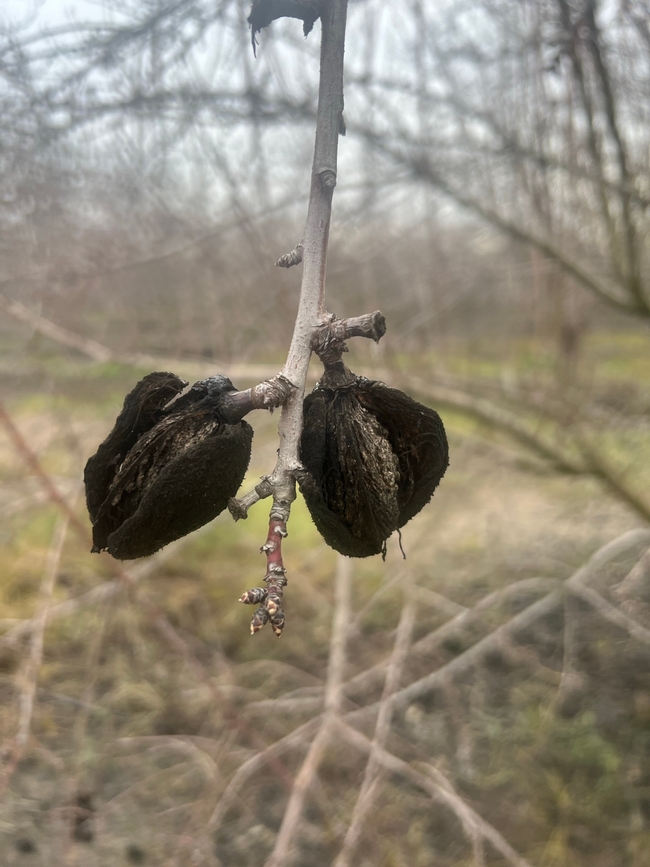The removal of nuts remaining on almond trees from the prior year's crop is an important winter sanitation practice for the management of navel orangeworm (NOW), Amyelois transitella. Residual nuts are called ‘mummies' and the process of removing the mummies is referred to as a ‘mummy shake' because they are mechanically shaken from trees. This practice is conducted during the dormant and delayed dormant season, a time when orchard access may be thwarted by the winter rains.
Most growers strive to have the mummy shake complete by mid-January when buds are dormant and less likely to abscise from the vibration caused by a mechanical shaker. As the flower buds progress toward bloom, they become more sensitive to the shaker vibration and more likely to abscise. Studies conducted in the 1980s (Sibbett et al.) established that the shaking of mummies by January 31 (approximately 8 days prior to bloom) at a Kern County site did not adversely affect yield; however, the authors cautioned growers of the risk of delaying mummy shakes further, particularly on early blooming varieties and in locations in the southern San Joaquin Valley1. Because bud development and bloom date advance with increasing latitude, the potential risk of early and mid-February mummy shakes was investigated by W. Asai (Pomology Consulting, Turlock, CA) in the northern San Joaquin Valley. This work, conducted at a more northern latitude, suggested shakes conducted in early February may not compromise yield2.
The lack of yield detriment attributed to a mummy shake-mediated bud loss may seem counterintuitive; however, simple concepts of tree physiology may help explain this phenomenon. Consider that only approximately 30% of the flowers on a tree set a crop. A given tree does not have the carbohydrate stores needed to set every flower. As a result, the loss of a subset of flower buds may have little effect on overall yield. Naturally, the risk of crop loss increases the closer the shake approaches bloom, and both research groups suggested that mummy shakes be complete prior to the pink bud stage of development.
Although rainy years make it difficult for growers to access orchards and complete orchard sanitation tasks, the heightened soil moisture adversely affects NOW survival in comparison to dry winters. Mummy nuts on the ground support enhanced NOW survival on a dry orchard floor than on moist soil with winter vegetation in the row middles. The next step in managing overwintering populations of NOW is destruction of mummies by flailing or mowing. Flailing and mowing should be completed by March 1, prior to the emergence of NOW. The emergence profile of NOW varies by location, but the first flight generally starts in late March.
Growers who have not completed their winter sanitation practices by the end of January should walk their orchards to assess bud development in consideration of a delayed mummy shake. Winter sanitation can reduce now damage by up to 80%, so an early February shake may be worth the effort if orchard access is possible and bud development has not advanced into pink tip. For more information on NOW management, visit www.ipm.ucdavis.edu.
Attached Images:
